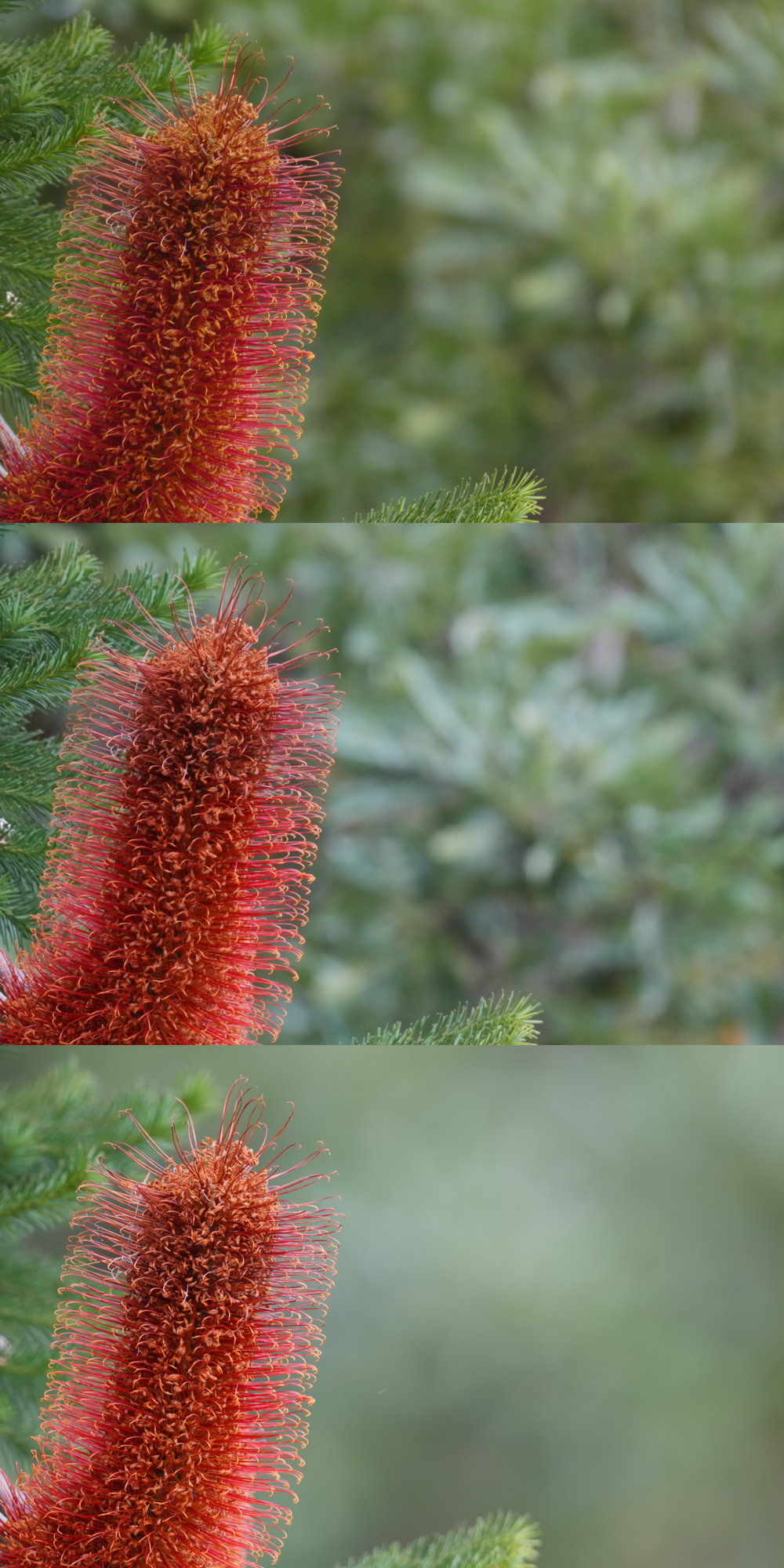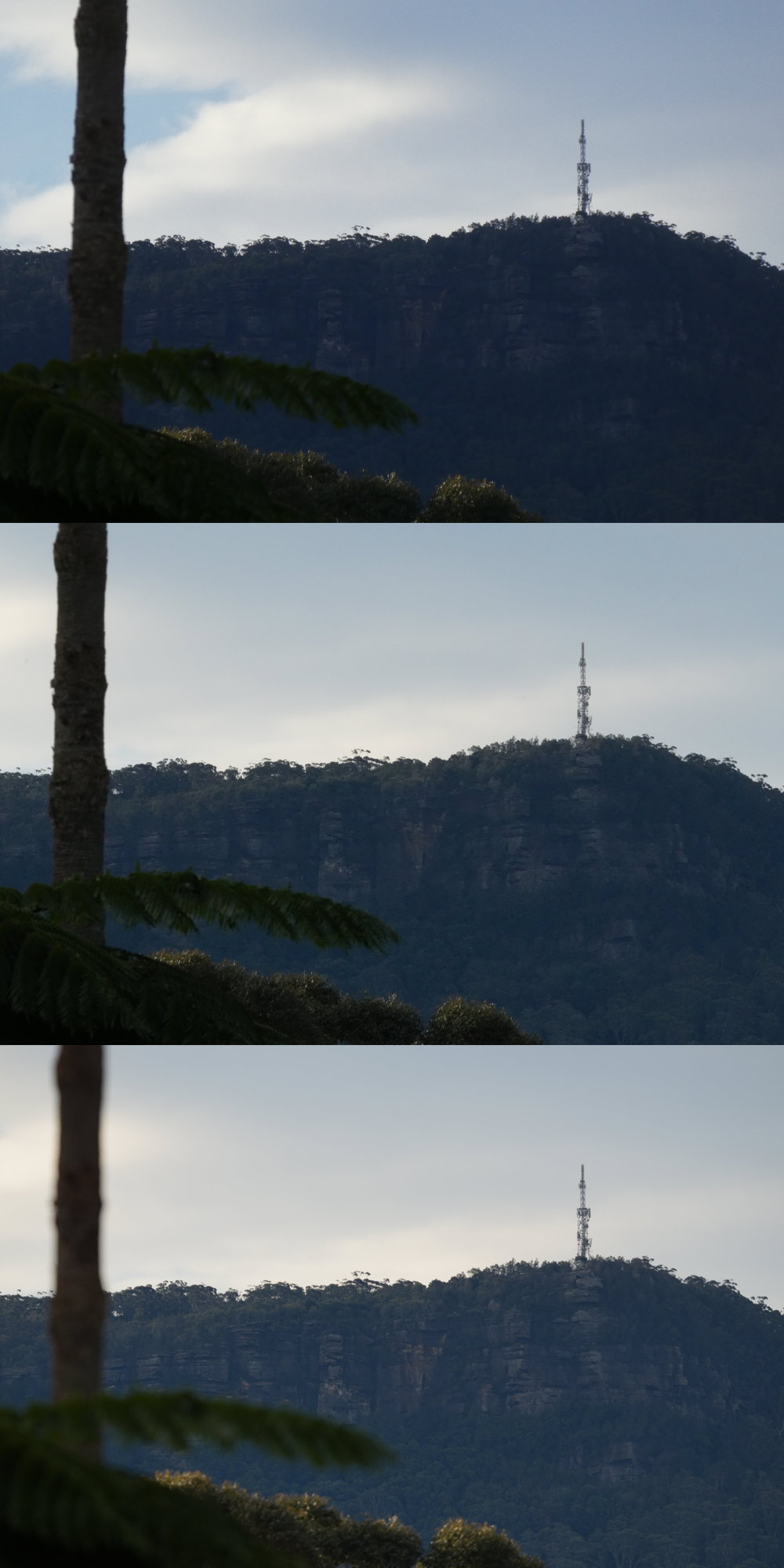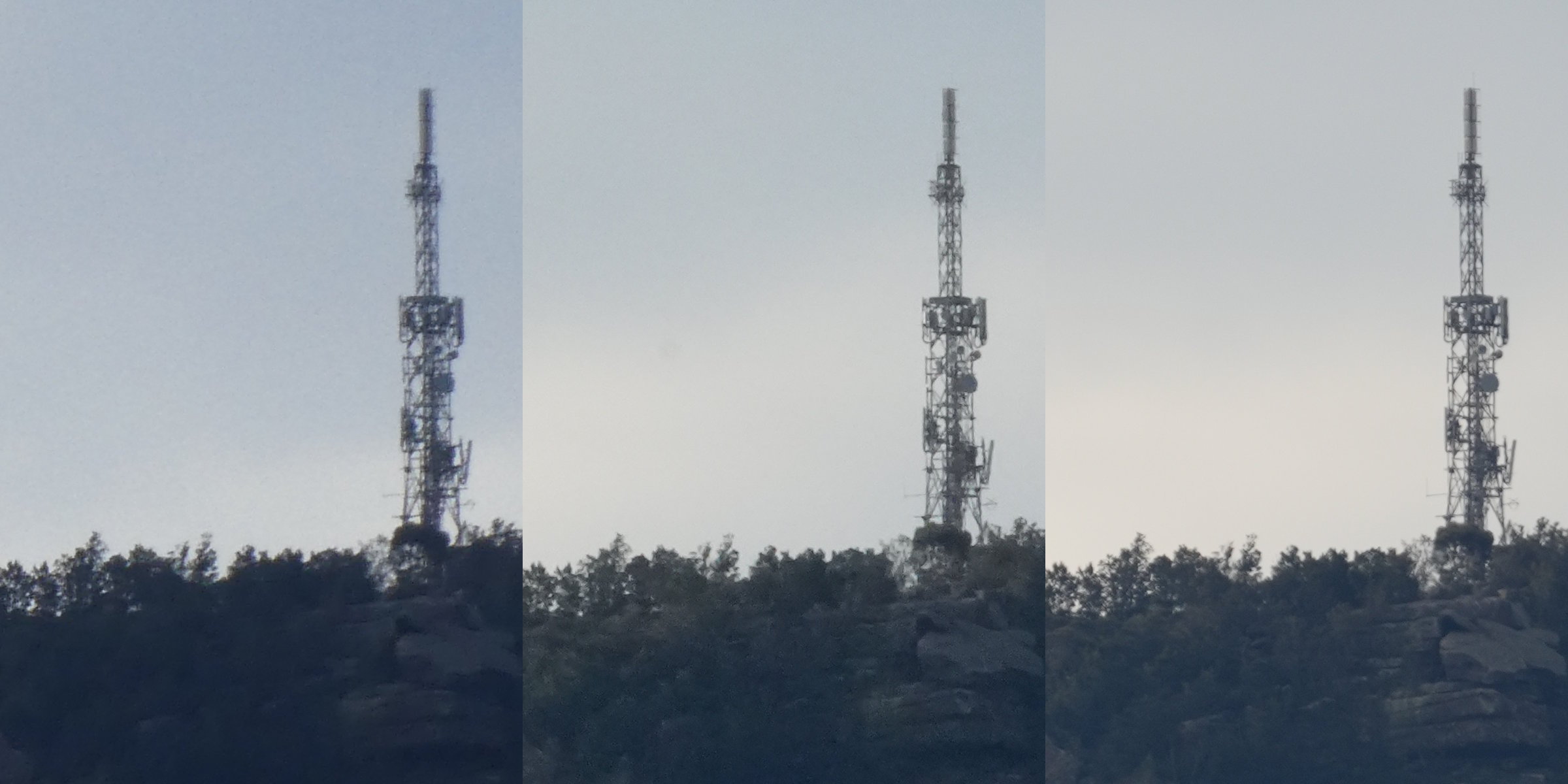Breaking into supertelephotography
About two years ago, after running through a series of second-hand compact cameras, I went looking for a compact of my own. I’m not entirely sure what the requirements were – availability, mostly – but I ended up grabbing a Panasonic Lumix DMC-TZ80. One of the neat features about this camera is its whopping 30× zoom: 4.3–129 mm, or “24–720 mm” as the “35 mm equivalent”.[1] That makes it a pretty versatile unit, but that far end of the range ended up being more useful than I anticipated, because it turns out what I want to photograph is lots and lots of birds.
But even though “720 mm” is pretty good, it just wasn’t enough. This one time there was a magpie nest up in a tree some 60+ metres away, and I just couldn’t get a good view of it. But more generally, I’d often get all the way to the tele end and still crave more ‘reach’. The undisputed king of superzoom is the Nikon Coolpix P1000[2] with its 125× zoom, from 24 mm “equivalent” to a legitimately ludicrous 3000 mm, all in a single package. And apparently it even has a ‘bird mode'! How exciting. But for various reasons, probably a combination of nonexistant stock and concerns about image quality, I dropped that idea at some point.
I didn’t really need a superzoom, after all. I wanted to take photos of birds, and I wanted them to be good, and wide-angle capability wasn’t worth compromising on that. I’d never owned an actual camera before, but a new plan took shape: find the most suitable (but still affordable!) optics available, and a good body to fit it on to. Ultimately it needed to go further than the compact or at the very least not fall short.
So in my investigations it seemed that super-telephoto zoom lenses basically top out at 600 mm, which I do believe is a smaller quantity than 720 mm. Teleconverters do exist, but there’s a compromise on quality and a notable increase in cost to what are already fairly expensive optics – so-called ‘budget’ super-telephoto lenses easily hit $2000. Suffice to say there were a lot of factors to consider, but after many dutiful comparisons and internet reviews, exactly one year ago today I ended up with a Sigma 150-600mm F5-6.3 DG DN OS mounted on a Sony α6700. Due to the size of the sensor on the α6700, this combination attains a “35 mm equivalent” focal length from 225 mm to 900 mm.[3] Do the smaller pixels of the crop format yield any quality improvement over the magnified image of a teleconverter? I don’t actually know, but I do believe the alleged 1.5× increase in “equivalent” focal length is bigger than the 1.4× increase that is presumably offered by a 1.4× teleconverter – and I know for sure that I have ultimately been very satisfied, even pleased, with the results. I am a certified camera snob now.
In the days of looking at P1000s, I naïvely believed that smaller sensors made worse photos. I know better now (it’s a good proxy, but not properly causative), and totally plan to write on the matter in detail, but what matters here is it’s generally possible to take photos on two different formats in a way that the results are effectively equivalent. It’s not the size of the sensor, but ~~how you use it~~ the size of the entrance pupil: if two setups capture all the same object-side photons, who cares what’s going on on the image side?
To take an equivalent photo, you need the same entrance pupil in terms of size and position, the same angle of view, the same exposure time and ultimately to make sure the image side spits out the same intensity. Notably across formats, maintaining angle of view requires the use of a different focal length, and so to keep the entrance pupil diameter the same you have to use a different f-number as well. And now six paragraphs of introductory rambling are starting to get to an actual point.
By the numbers, the Sony and Sigma should take better photos than the Lumix. But wouldn’t it be fun to see if they could take the same photo, then directly compare how much improvement the Sigma offers over that?
Some quick maths: The Lumix claims that 129 mm is “equivalent” to 720 mm, and the Sony body claims that a 150 mm lens is “equivalent” to 225 mm. We get the following overlap: 40.3 mm on the Lumix corresponds to 150 mm on the Sony+Sigma, and 129 mm on the Lumix corresponds to 480 mm on the Sony+Sigma, and these two ends are then equivalent to 225 mm and 720 mm respectively on a 35 mm format (which measures 36 mm × 24 mm). Still with me?
At the wide end of this range, the Lumix can manage f/5.6 at best, while the Sigma can go down to f/22. With the appropriate focal lengths, that amounts to entrance pupil diameters of 7.2 mm and 6.8 mm respectively – just close enough to overlap. Meanwhile at the tele end we get f/6.4 versus f/25, for 20 mm and 19 mm respectively. Once again, just the tiniest overlap in photographic capability, but it exists. In both cases the f-numbers give a 16 stop difference, so just make sure to set the ISO speed on the Sony to be 16 times higher and everything’s golden.
So to mark the occasion of the first anniversary of my new(er) camera, I thought it would be fun to to put theory to the test and compare some equivalent photos – and then see how much the Sigma can improve the quality when it operates at its full power. Except I actually took the photos more than a week ago, then had to go back for another round because I was incapable of multiplication by 16 the first time.
First off, this banksia flower (Banksia ericifolia?).

Top to bottom: Lumix at 129 mm f/6.4 1/50 s ISO 200; Sigma at 454.1 mm f/25 1/50 s ISO 3200; Sigma at 454.1 mm f/6.3 1/50 s ISO 200.
Obviously the bottom photo has a substantially different depth of field. To assess the quality differences (or similarities), below the photos are cropped to the top of the flowers.

There’s some fairly apparent difference in colour between the Lumix and the Sony+Sigma, possibly due to differences in construction or perhaps different white balance strategies that I didn’t control for. But hopefully it’s clear that the first two, which are theoretical equivalents, are very similar in terms of (lack of) quality while the last photo is substantially clearer and more detailed. All the noise of the first two engulfs the tiny filaments of spider web that stand out in the bottom photo, and the flower itself is far more vivid. But the last two came from the exact same camera and lens! That’s the difference of a large entrance pupil.
Next target: a shadowed sandstone cliff with a small broadcast tower on top.

Top to bottom: Lumix at 107.5 mm f/6.1 1/800 s ISO 200; Sigma at 391.3 mm f/25 1/800 s ISO 3200; Sigma at 387.6 mm f/6.3 1/800 s ISO 200.
Looking close at the tower and sandstone below best shows the difference in quality here:

So evidently the passage of time and clouds has somewhat affected the proper equivalance here, but hopefully it’s clear that the Lumix doesn’t hold up. In terms of the tower itself, both Sony+Sigma photos are fairly similar, although I would say that the antennas at the very top, as well as some of the framework, is clearer for the rightmost hpto with the largest entrance pupil. The bigger difference with the last photo is in the plants and rocks of the cliffside, which degenerate into an incongruous mess when the cameras only have one sixteenth as much light to work with.
I didn’t take ‘raw’ photos for this experiment, in part because I forgot, but I forgot because it would help based on prior experience: when the Lumix outputs a raw photo, there is terrible barrel distortion and heavy black vignetting around the edge. I think this is why crazy zoom ratios are only available on fixed-lens cameras like the Lumix or the Coolpix P1000: the optics can’t attain acceptable quality across such a large range, and so significant corrections are needed in software. So they can say in their marketing materials that you can get the raw output, but it’s not too useful on its own. I think this contributes to making the tower more smeared out on the right-hand edge in the Lumix photo, which doesn’t happen in the well-corrected optics of the Sigma lens.
So how’s photo equivalance theory working out? I think it’s come out pretty well! No one would ever say that two disparate cameras should have identical performance after accounting for their sizes, but it’s quite clear that the Lumix photos and small-aperture Sony+Sigma photos are comparable in terms of image noise, whereas photos with the exact same Sony camera and Sigma lens using only a larger aperture are orders of magnitude ahead – well, the difference in entrance pupil should grant a fourfold improvement to SNR, which at least rounds up to one order of magnitude.
In summary, I have been very happy with the Sigma 150-600mm F5-6.3 DG DN OS, even if I can’t write out its name without glancing at the box every two seconds. Despite the substantial difference in size and weight, the quality improvement is palpable, and handling a ‘real’ camera is actually fun! With the compact, you have to wait for the lens to extend every time you turn it on, then wait even longer for it to extend to the desired focal length while dispassionately holding the zoom lever, whereas the Sigma you-just-read-the-name allows the front of the lens to be gripped and pulled directly forwards to zoom in, which is fun in itself but also makes it easy to quickly zoom in to a target and snap back out when you want the wider picture. Another pleasant surprise is its close-up performance: unlike long primes and I believe even other lenses in its range, the Sigma can focus at suprisingly close distances up to a magnifcation around 0.34×. It’s not exactly ‘macro’ level, but with the small pixels on modern sensors it’s impressive how well it can capture tiny objects, and at a hefty 150 mm you can do so from much further away than other dedicated macro lenses.
Ten out of ten, definitely photographs birds. At least until my snobbery gets the better of me and I yield to the siren song of one of those f/2.8 400 mm primes.